Decorating with plants – 11 ways to display houseplants
Bring life and vitality to your home with these ideas for decorating with plants


Decorating with plants is a wonderful way to bring life and vitality to interiors. There's nothing like lush greenery to brighten up a living space, plus the positive impact plants have on our health and wellbeing is well documented.
With such a huge variety of indoor plants available, from dainty string of pearls to large bird of paradise plants and indoor trees like figs and citrus, the scope for decorating with plants is endless.
Whether you're looking to liven-up the kitchen or bring calm to the bedroom, there is a house plant for every room and situation, so before you start decorating be sure to familiarise yourselves with the best indoor plants.
To help inspire your plant choices, and how to arrange them, we've rounded up an array of botanical home decor ideas along with some tips from the experts.
Decorating with plants – the benefits
Decorating with plants has become hugely popular in recent years as we seek to reconnect with nature and bring its soul-nourishing, calming influence into our homes.
Available in a host of shapes, forms, colors and textures, from large leafy palms to small shapely cacti, not forgetting flowering varieties, indoor plants make versatile decorating ideas and are used by interior designers as living forms of art.
'Plants have a sculptural quality, they are always changing and have such intricate details, and complement every type of decor style,' says Eli Manekin, founder of house plant store Loop Living. 'There really isn't any other design element like them, and they bring out the best in every interior. In short, they demand attention, which is what I think great art does.'
Design expertise in your inbox – from inspiring decorating ideas and beautiful celebrity homes to practical gardening advice and shopping round-ups.
Plants work well in all rooms of the house; for instance bathroom plants can really enhance this often overlooked room.
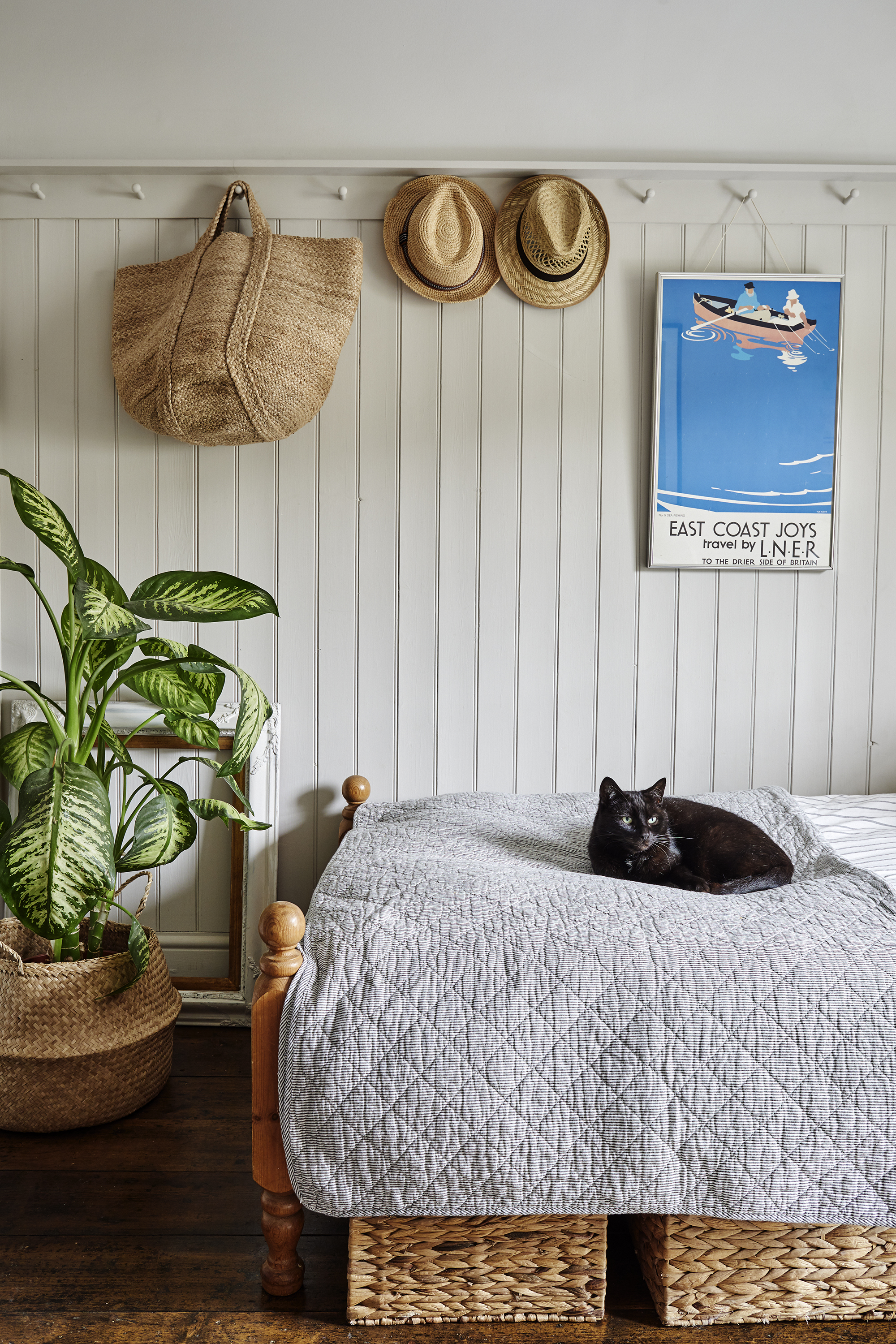
As well as being beautifully decorative and scented, plants bring a wealth of health benefits. Not only can plants help purify the air, the activity of indoor gardening can be extremely mindful, plus carefully positioned Feng Shui plants are said to increase the flow of positive energy around your home.
However, before you leap to fill your home with house plants, be sure to pay attention to their care needs first. Different plants have different habits so choose plants suitable for the area you are decorating and position them in places where they will thrive.
Alternatively, for those that aren't green-fingered there's always the option to decorate with flowers, plus there are plenty of artificial plants available for an everlasting display.
1. Fill your shelves with house plants

For many interior designer and stylists, plants are a must have when it comes to decorating shelves.
'Plants will bring an element of softness and freshness to any shelf, especially those that trail,' says Simon Temprell, interior design manager at Neptune. 'Succulents have architectural style and demand very little attention, so they can be useful for filling the gaps where objects feel a little too rigid.'
Featuring a mix of cascading ferns, spider plants and potted pelargoniums, this abundant plant shelf creates a feeling of an indoor jungle in this family living space.
2. Soften partition shelving
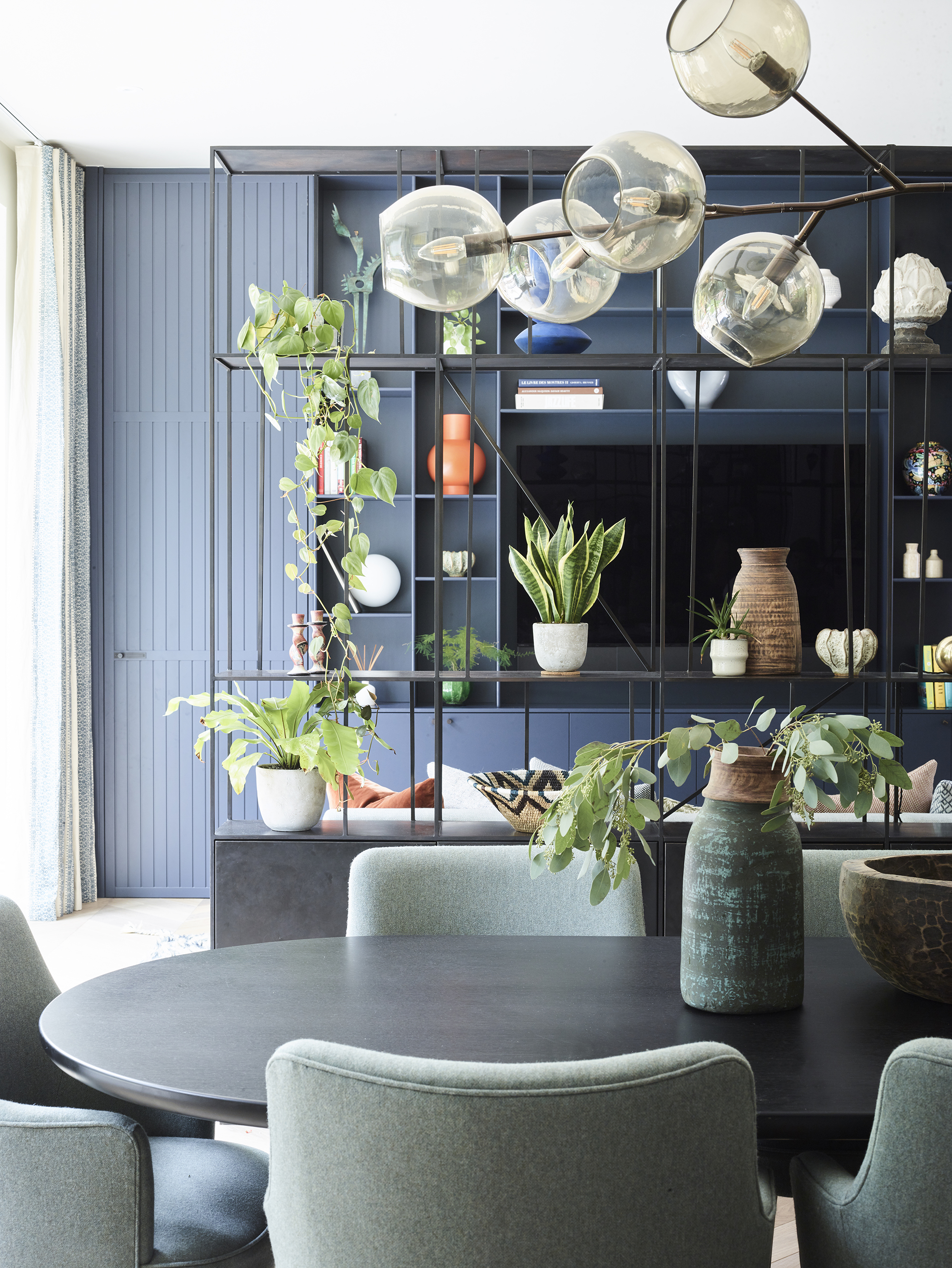
A selection of different indoor plants can make the perfect finishing touch to a room divider in an open-plan living room.
As well as providing pops of vibrant color, plants with sculptural, organic forms are a fabulous antidote to the strong architectural lines of contemporary partition shelves.
Styled with a mix of plant species placed at different heights (from top: Devil's Ivy, Snake plant and Philodendron), these shelves help subtly zone this living and dining space while maintaining a light and airy feel throughout.
3. More is more
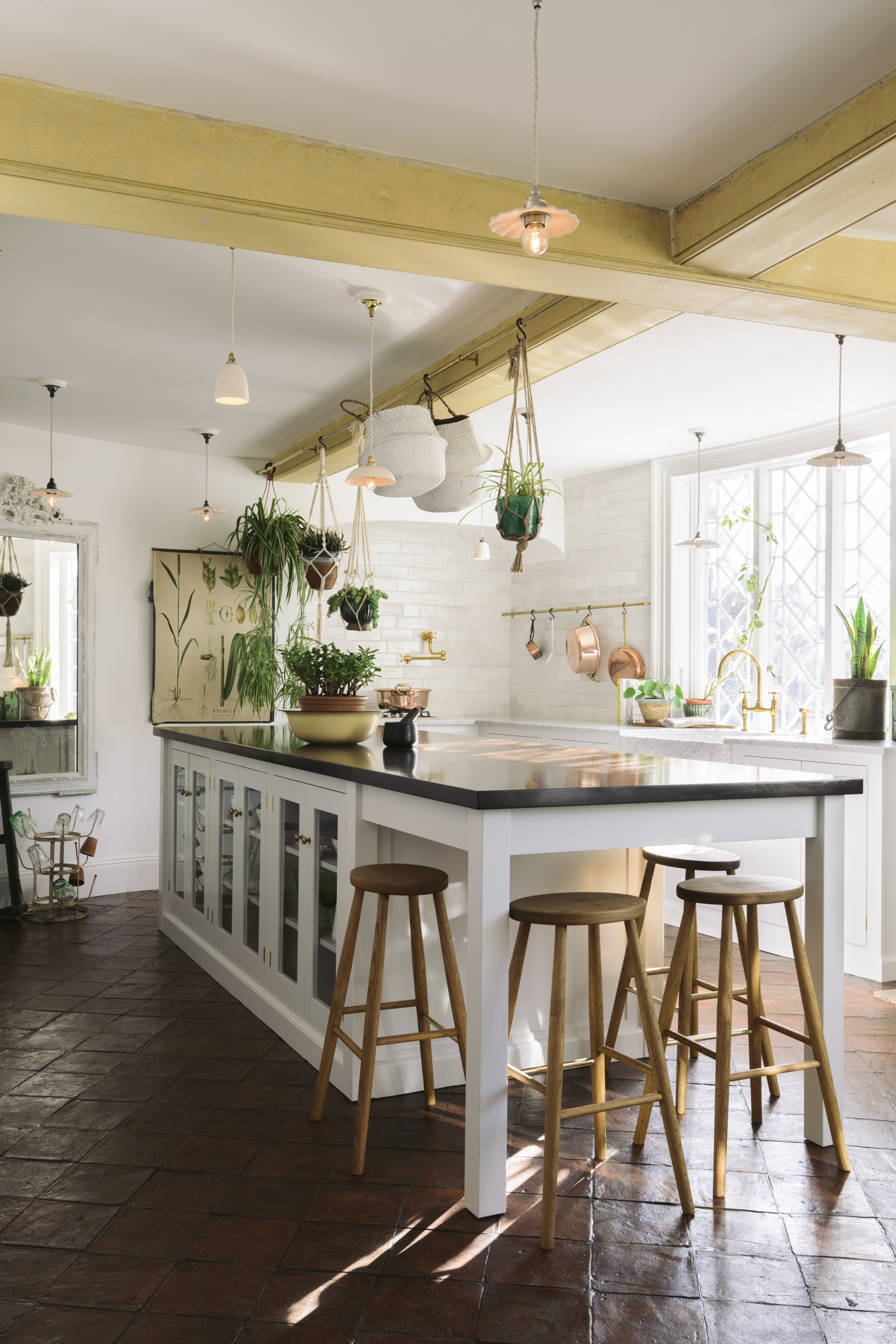
When it comes to decorating with plants don't hold back, as abundance is the key to a successful botanical theme, says Helen Parker, creative director at Devol. From shelves and windowsills and even hanging from the ceiling, think creatively about how you can use them to create an immersive and magical feel.
'Just popping a couple of plants on your windowsill isn’t enough, they need to become part of the room,' she says.
'Abundance is important, the more you commit to the botanical theme the more impressive it looks, walking into a foliage-filled room is uplifting,' adds Parker. 'It is high maintenance but really worth the effort when they flourish and your room is ever-changing with new growth.'
4. Layer plants at different heights
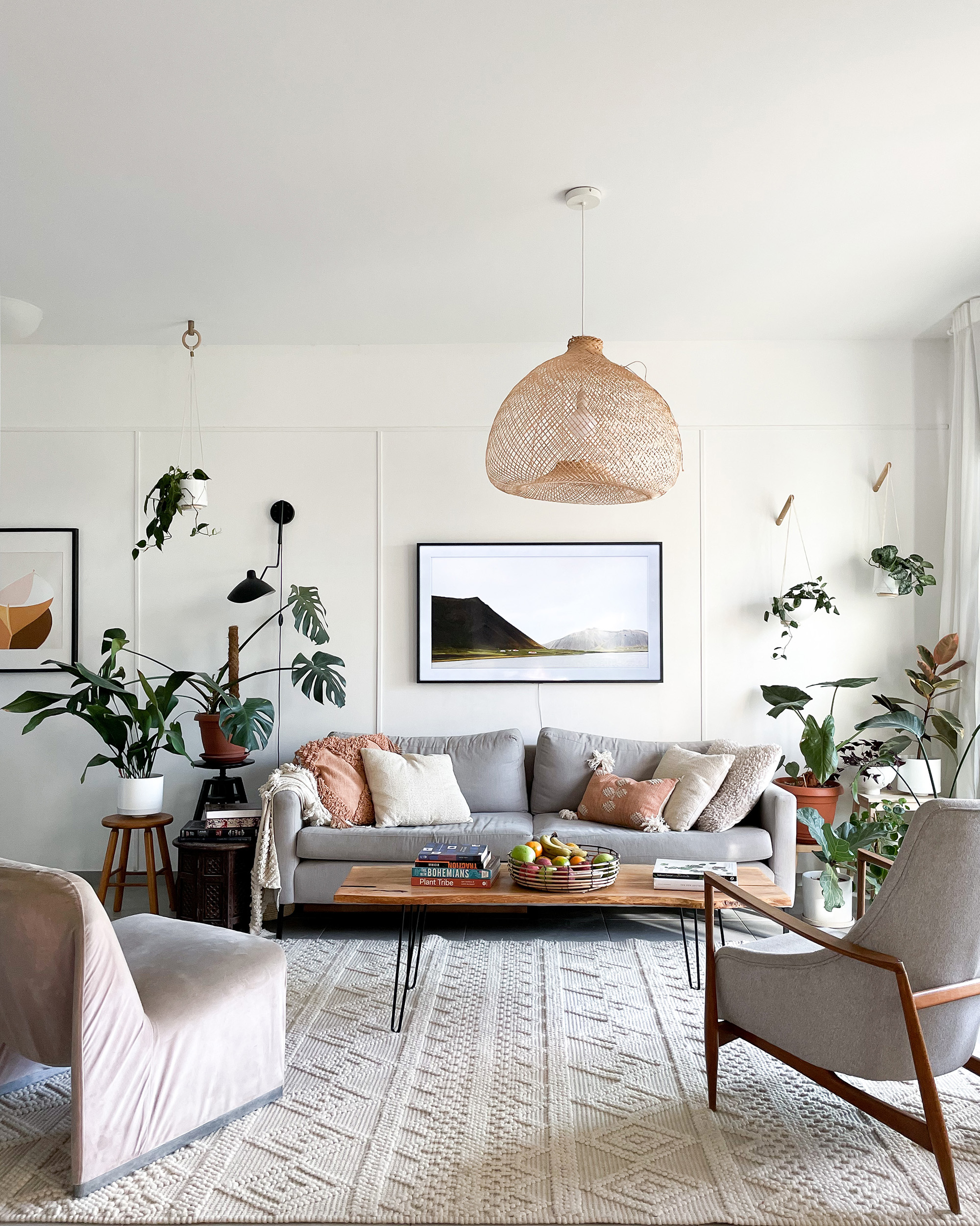
Layering plants is a lovely way to bring life and interest to a white living room. Choose a variety of forms and shapes and display them at different heights, either raised on stands or hung as part of a gallery wall, for an indoor jungle feel.
'Plants with variegated leaves and strokes of pink are great as decor elements because of their dramatic contrasts. They literally look like an artist created them,' says Eli Manekin.
'I always recommend potting in white planters in simple shapes, as these don't compete with your plant.'
5. Decorate with indoor trees to create a focal point

If the indoor jungle look is too much, just a few carefully positioned can be enough to elevate a space. When decorating with plants, homeowners are increasingly searching for large statement plants to create a focal point say the experts.
'We are seeing a trend for people to use house plants not as accessories for a room but as an integral design element, treating plants the same way they would treat furniture or art pieces,' says Hollie Newton, chief creative officer of Sproutl. 'Using plants architecturally as part of a design scheme can instantly transform any space.'
For plants to make a statement try the banana tree, elephant's ear, pygmy date palm or indoor trees like citrus or fig trees. This weeping fig tree really makes the most of this high-ceiling Georgian dining room and helps lead the eye upwards to the beautiful architectural coving.
6. Place plants on the windowsill

The windowsill is the perfect place to display light-loving house plants. However, when it comes to how to care for house plants in winter, be careful about keeping them here – while they will appreciate the daylight, some can be damaged by the drafts and fluctuations in temperature.
‘Be mindful of extremes – flowing air vents, fireplaces or proximity to exterior doors. Plants thrive in a consistent environment, where possible position plants away from areas that fluctuate frequently,’ advises Emily Wight, co-founder of indoor plant store Foli.
7. Arrange plants around the bed
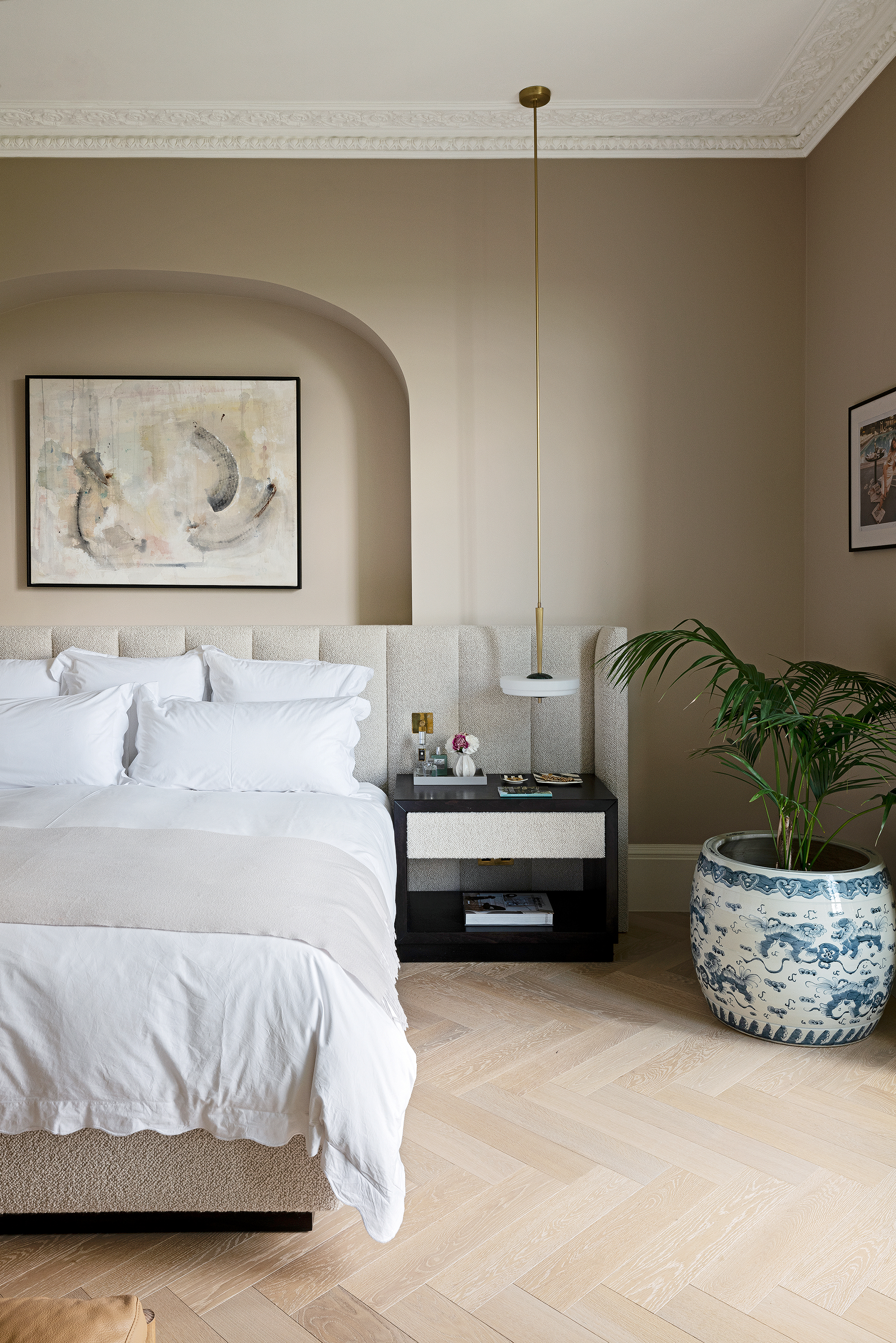
As places of recuperation and relaxation, bedrooms are the perfect place to embrace biophillic design – the practice of using nature to bring harmony. By placing the best air cleaning plants near your bed, you can help create a healthy environment for sleep.
'Your bed is likely to be the centrepiece of your bedroom and can easily be freshened up by surrounding it with air purifying plants, which will help encourage relaxation and aid a good night's sleep,' says Beth Chapman, founder of Leaf Envy.
'Not only will clustering plants near your bed create a beautiful display, but they will also eliminate airborne toxins from your room. Try mixing medium size plants, like the Calathea Orbifolia, and pair with large plants that have arching fronds, like the Kentia Palm.'
8. Create a bathroom oasis

Bathrooms can easily be overlooked when it comes to decorating with plants, but as humid spaces they make the perfect environment for many indoor plants, plus will help bring a magical, spa-like feel to the space.
'When selecting what plants you would like to add to your bathroom, consider the lighting in the space to ensure it’s suitable for your plants to flourish in,' says Leaf Envy's Beth Chapman. 'Dedicate windowsills to plants that require that extra bit of lighting, and for bathrooms with low lighting, opt for plants like the Boston Fern that loves humidity.'
9. Think about the container
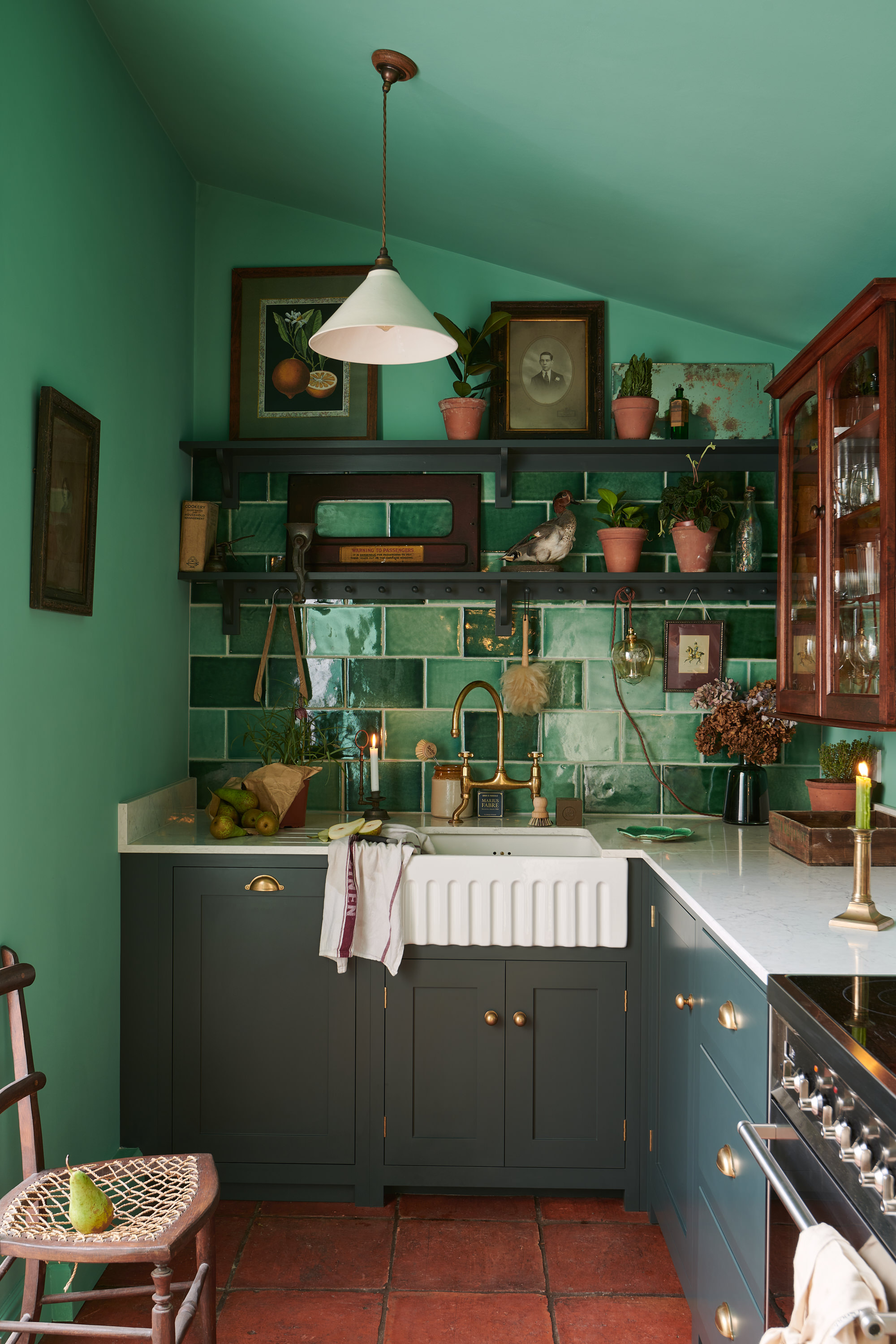
When arranging indoor plants think about the pot or container they are displayed in and choose a vessel to match your decor. Terracotta pots will bring rustic charm perfect for farmhouse kitchens while a woven basket would be perfect for bringing texture to a Scandinavian living room.
'I find potting plants up in old terracotta pots and vintage garden urns makes them feel more special and cohesive,' says Helen Parker of Devol.
Whatever pot or vessel you chose ensure it have good drainage – leaving house plants sitting in standing water is a recipe for failure!
10. Group plants on a table
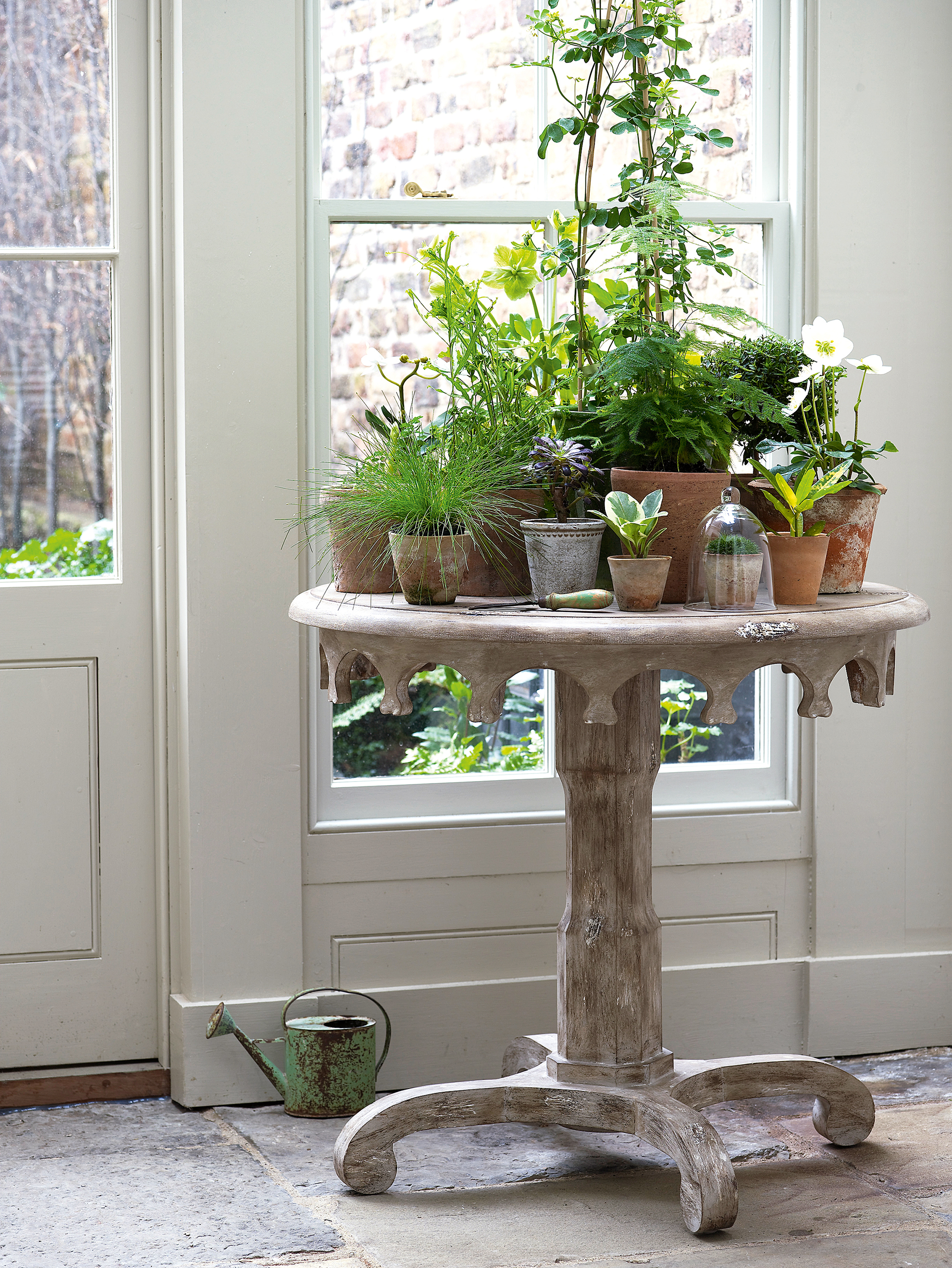
Whether part of your entry table decor ideas or displayed on a table by a window, clustering plants together is a lovely way to create a decorative focal point. For best results pick a variety of different leaf shapes and forms, and stagger the heights, placing the tallest at the back and small pots at the front.
11. Brighten up a corner
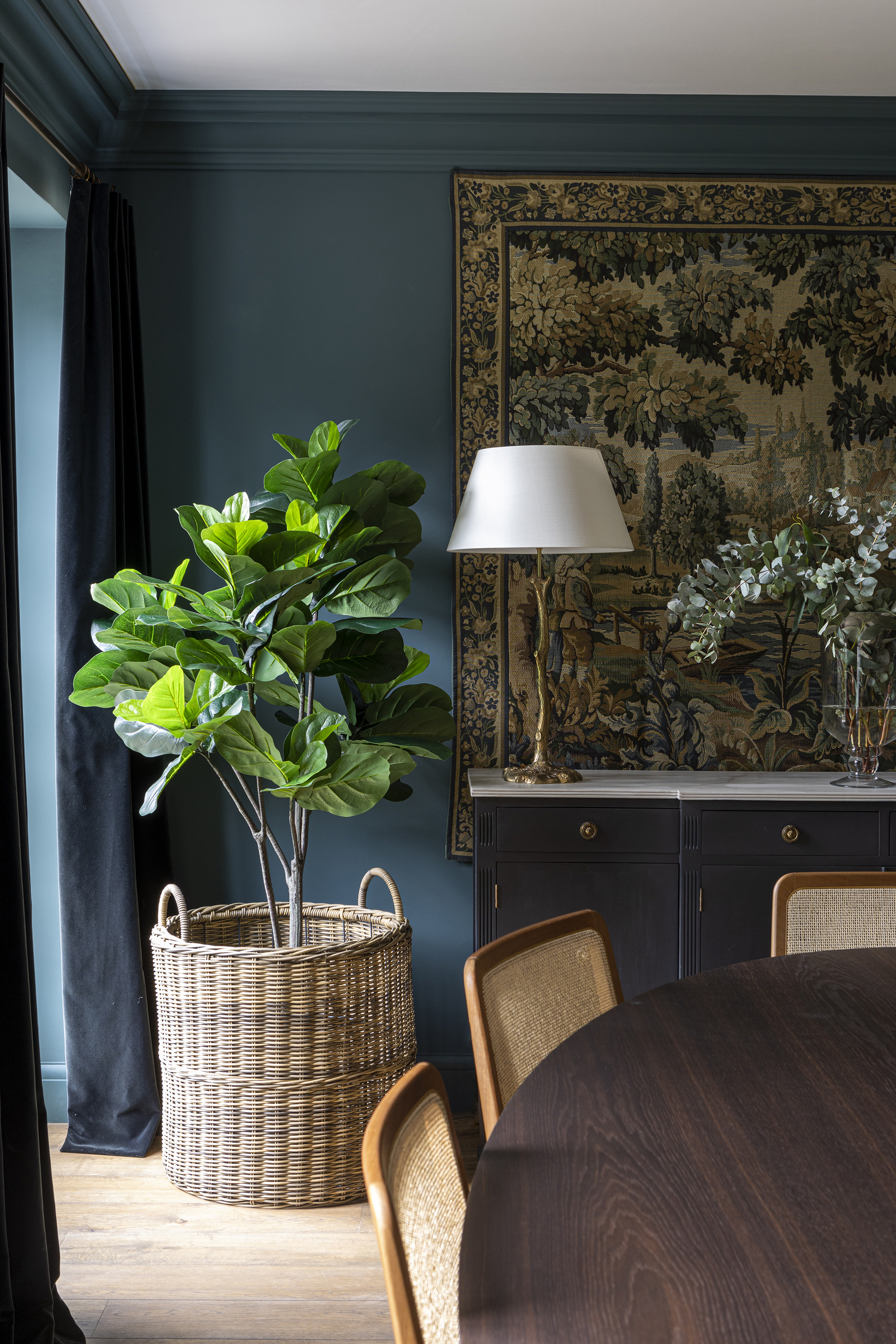
It can be tricky to know what to do with an empty living room corner, but adding a large houseplant will instantly bring purpose and brighten up the space.
'Incorporating plants and greenery into a space helps it to feel layered and welcoming, adding natural texture, organic shapes and a pop of color to the room,' says Katie Lion, senior interior designer at Kitesgrove.
'Here, we have added a fig tree into the corner of the room to visually soften the space and enrich the green tones within the room palette. Plants offer a sense of wellbeing and calm to a space, bringing the outdoors in for a balanced interior that you want to spend time in.'
How do you decorate a room with plants?
There are endless ways to decorate a room with plants. For maximum impact, layer plants of different shapes and textures – from trailing varieties to big leafy palms – and display them at different heights, to create an immersive, indoor jungle feeling. Alternatively, select a few statement plants to create focal points within a room.
Plants are a brilliant tool for softening living spaces, particularly those with strong angles and architectural features, and look particularly effective incorporated into bookshelf ideas or grouped as part of your mantel decor ideas. 'Remember plants and greenery will add life to your shelving, so be sure to include them to bring a sense of the outdoors in and help ground the space,' says Emma Deterding, founder and creative director, Kelling Designs.
However, before you decorate a room with plants, 'the first thing to consider is the environmental needs of your houseplants: do they need plenty of direct sunlight? Or prefer somewhere dark and cool?' says Sam Hood co-founder and chief creative officer at Amara.
'If this extra care sounds like too much work, faux plants or dried stems like pampas grass and eucalyptus look just as natural and can be homed in stylish vases and planters.'
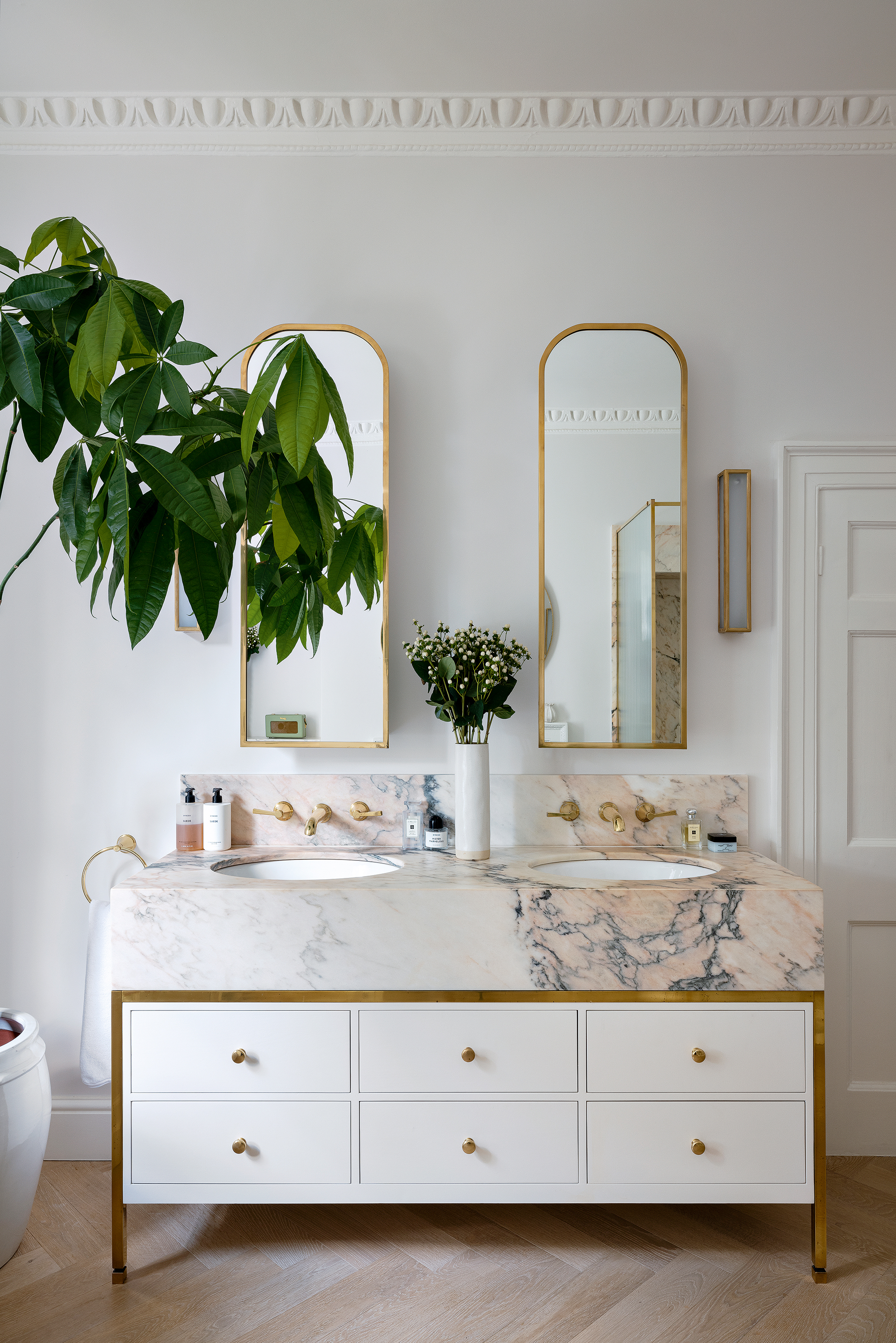
How should I arrange my living room with plants?
There are many ways to incorporate plants into your living room from incorporating them into your living room shelving to hanging them as part of your wall decor.
'Mixing different sizes, styles and textures of pots in complementary colours is a sure way to create an individual style and identity to your home space,' says Beth Chapman, founder of Leaf Envy.
'Groups of three work well, in varying heights. If you like a more minimal style, try placing a favourite plant cutting in a propagation container as a feature and enjoy watching it flourish.'

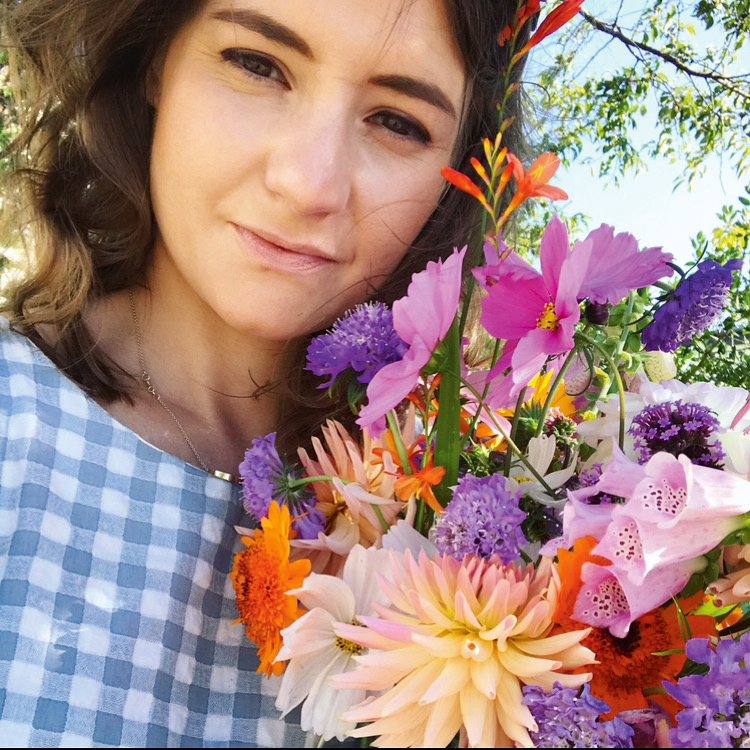
Pippa is a contributor to Homes & Gardens. A graduate of Art History and formerly Style Editor at Period Living, she is passionate about architecture, creating decorating content, interior styling and writing about craft and historic homes. She enjoys searching out beautiful images and the latest trends to share with the Homes & Gardens audience. A keen gardener, when she’s not writing, you’ll find her growing flowers on her yard for styling projects.